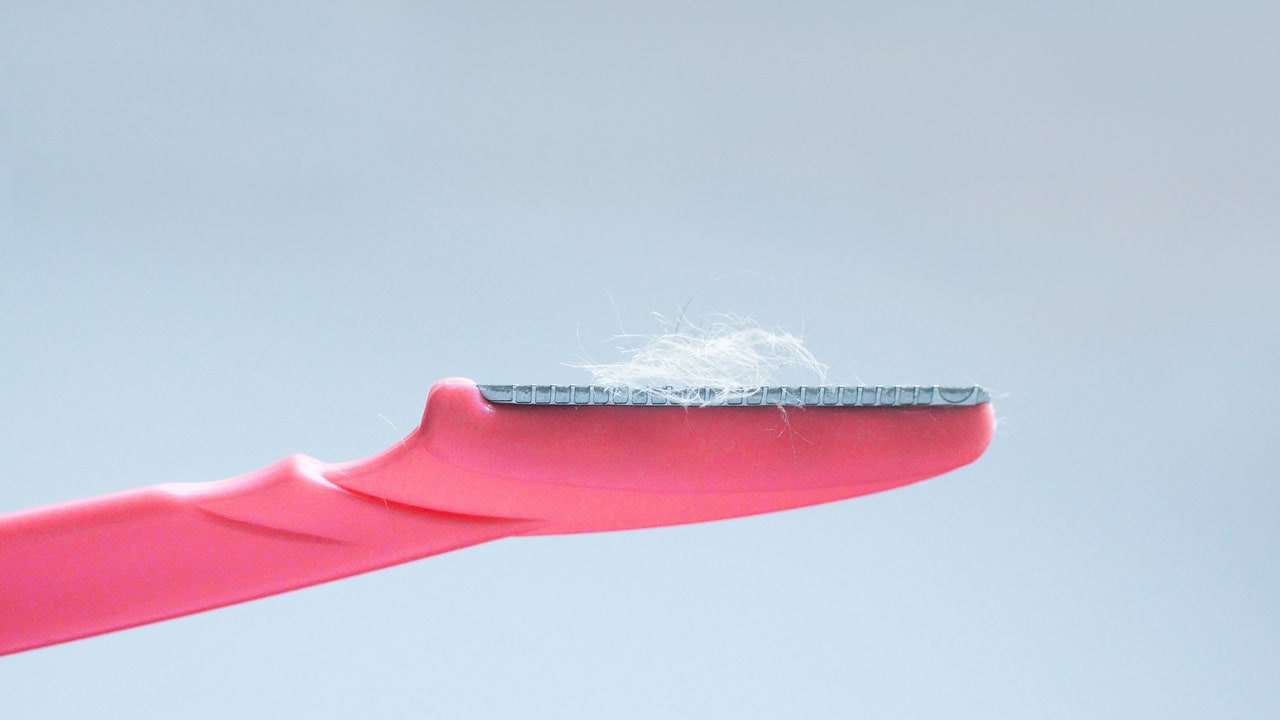Lastly, remember that your dermaplaning experience should never be painful. If you feel any discomfort, lessen the pressure you’re applying to your skin or avoid the area entirely.
How often should you dermaplane?
Since at-home dermaplaning results are more superficial, you can do it more often. Both Gohara and Ciraldo suggest once weekly at home, compared with once a month in office.
Will dermaplaning make hair grow back thicker?
Now for some dermaplaning myth busting. Since the procedure not only removes dead skin cells but also your facial hair, a common worry is that it can cause stubble. Ciraldo and any expert will tell you this isn’t the case; facial hair removal has been clinically proven to have no effect on regrowth. Instead, you’ll just be left with an extra-smooth base for makeup.
What tools should you use for dermaplaning?
Before you begin, pick your fighter. Glamour editors love the Dermaflash Luxe, which also happens to be a beauty bag staple for Lizzo’s makeup artist. The popular tool features gentle vibrations that make exfoliating your face a cinch, even for first-time users.
Gohara’s recommendation is the Versed Skincare Instant Gratification, a nonelectric option that features a reusable, slip-free handle. When you’re done with the blade (each lasts for three or four uses), simply swap it out for a new one. Ciraldo likes the Stacked Skincare Dermaplaning Tool, an esthetician-designed exfoliator with hundreds of glowing reviews on Sephora to back it up.
How to dermaplane at home, step by step.
Whichever tool you choose, don’t start dermaplaning without watching some how-to videos, which will give you the best idea of how the process works on your own face. “Done improperly, you can leave marks, scars, cuts, scrapes, open areas, inflame the skin, or worsen acne,” says Gohara.
Our derm experts put together a starting guide for you, so make sure to follow their step-by-step tips for safe, smooth results.
Step 1:
Start on clean, dry skin. If your dermaplaning tool is electric, turn it on to activate vibrations.
Step 2:
Working in sections, hold the skin taut with one hand and use your dermaplaning device with the other. Move the blade over your skin in short, light strokes. You’ll get best results if you hold the blade at a 45-degree angle.
Step 3:
Try to keep the strokes in a downward motion to avoid irritation. You’ll see dead skin cells and hair start to accumulate as you go. Make sure not to go over any areas that are inflamed or irritated, which can cause bleeding.
Step 4:
Rinse your face with a gentle cleanser and proceed with the rest of your skin-care routine.
How do I protect my skin after dermaplaning?
The upsides of dermaplaning—smoother makeup application, softer skin, and more even texture—also mean you need to take extra care of your face. “Dermaplaning lessens the skin barrier,” says Ciraldo. “This means your products will penetrate more effectively, but it also means skin can become drier since there is less barrier to prevent water loss.” To stay hydrated, pack on your moisturizing serums and barrier repair creams, like the Dr. Loretta Intense Replenishing Serum and La Roche Posay Lipikar Balm.
You’ll also want to avoid anything that could potentially cause irritation, so skip the AHAs and retinoids on freshly dermaplaned skin. Opt for a gentle cleanser instead (Gohara tells patients to keep it simple with the Dove Beauty Bar), and always protect your skin with plenty of SPF (try the Dr. Loretta Urban Antioxidant Sunscreen for a light-as-air formula that leaves no residue behind). Check those steps off your list and smooth, glowing skin will officially be yours in one little 10-minute treatment.
Sarah Y. Wu is a beauty writer in Berlin. Follow her on Instagram @say.wu.




















+ There are no comments
Add yours